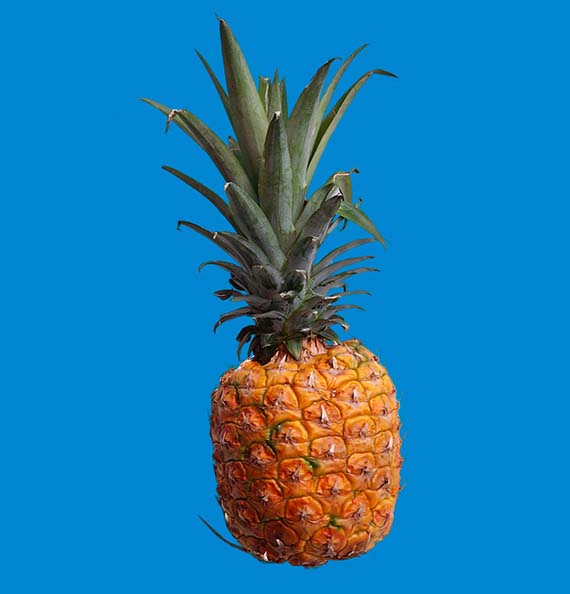


As part of the forthcoming exhibition ‘Harvest’, LA-based collective Fallen Fruit (David Burns & Austin Young) are creating a display of objects sourced from the general public that represent the pineapple in all possible ways and producing a pineapple wallpaper alongside this display. In the lead up to the exhibition the artists’ tell us about their particular interest in the pineapple.
It has been said that pineapples are ‘Too ravishing for moral taste . . .’ The truth is that Australian’s eat over 20 million pineapples per year and the first commercial planting (in Australia) was established in a current day suburb of Brisbane in the mid-19th century.
Native to pre-Colombian Brazil, the pineapple was traded as a symbol of goodwill between indigenous people in South America. This is where European explorers learnt about the fruit in the late 15th Century. Christopher Columbus brought the pineapple back to Europe as a gift and it was quickly popular with Europe’s royalty. Exotic fruits, like pineapple, were available for rent to display at parties. However, it was only the very wealthy who could afford to eat them. The pineapple remained a status symbol for about 100 years, and King Charles II of England commissioned ‘an official portrait receiving a pineapple as a gift’.

Because of early 20th century plantations, cultural tourism, and global food production, contemporary associations with the pineapple are about sublime vacations, tinned fruit, and cliché images of sunset beach scenes. Pineapples decorate household objects, t-shirts, and wallpaper. The flavour is infused in classic desserts, childhood sweets and tropical cocktails.
The symbolism of the pineapple is ubiquitous. For centuries across all cultures in the world pineapples represent hospitality and welcomeness. Even in its early cultural references this unique tasting tropical fruit embodies goodwill and a respect for all parties, both hosts and guests. Pineapples are a symbolic gateway and often adorn the threshold of a doorway in the form of a matt or the walls or in the ornamentation of the furniture in a guest room.
Pineapples are truly transnational, they embody world culture and they navigate language barriers and class systems. Losing nothing in translation, the pineapple is a universal symbol that means that you are welcome.
Fallen Fruit (David Burns & Austin Young)
Submissions for Fallen Fruit: Pineapple Express! Close midnight 25 May 2015.

‘Harvest’ opens 28 June 2014 across the ground floor galleries at GOMA and will explore the production, consumption and symbolism of food. It takes as a point of departure colonial legacies and globalisation, labour and consumption in relation to the food industry. The exhibition will be presented in conjunction with the Australian Cinémathèque program ‘Harvest: Food on Film’ and will be accompanied by a stunning illustrated publication.

